I’ve started doing off-camera lighting practice outside with the Nikon D600 and fully manual flash units. The sessions consist of self portraits with various styles of lighting and settings. I’ve done two so far and have plans for more.
If you find my settings odd, take note that I have been shooting with half-stops instead of third-stops. It is easier because I don’t have to scroll through a bunch of values and more importantly, the notches on the meter are easier to understand. I shoot at least one stop under exposed, but more than likely between that and three stops. Even more so with the shots at f8 in my second session.
Session #1:
Two position-able lights on tripods. Flash were bare most of the time, but I also used the built-in wide angle diffusers and bounce cards at times. The lens I used was the Nikon 28mm f1.8g.
Session #1 Example photos:
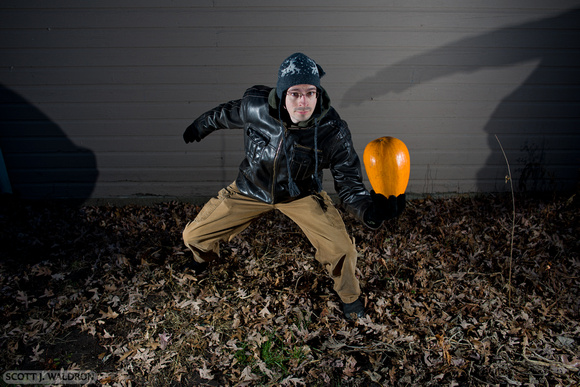
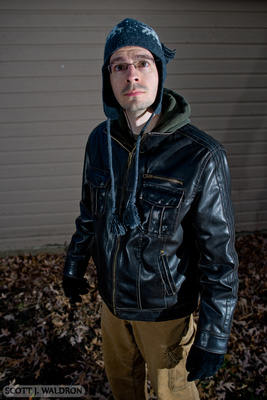
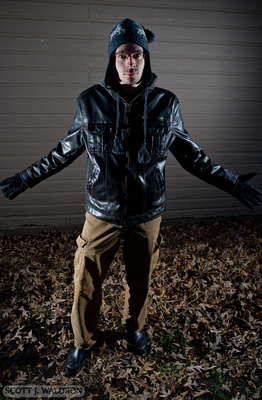
You should be able to tell how I setup lights pretty easily with those photos. The horizontal example photo had a flash on the left and on the right of the camera allowing for even lighting to the front of the subject (take note of the shadows). The vertical photo on the left had a similar setup, but the flash on the left lit me chest and the flash on the right lit my shoulder and some of my back. The vertical example on the right had the two lights to my side for a strong halved look to it. If I had more equipment I might have put a weak light in front to balance things out a bit more.
Session #2:
This time I used both flash connected to a multi-flash bracket and a true light stand so I could get more height. I used a white umbrellas as the diffuser.
My goal here was to get softer light than the first session. I also wanted to play with more intense differentiation between background and foreground brightness.
Session #2 example photos:
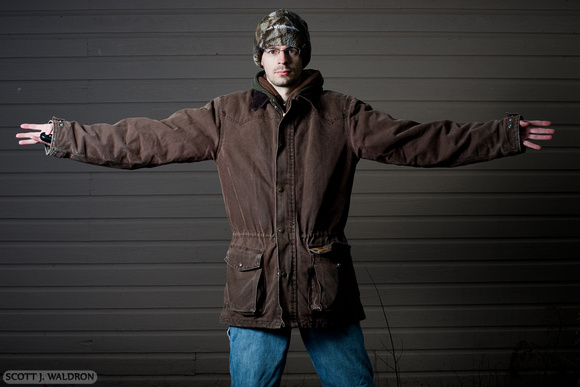
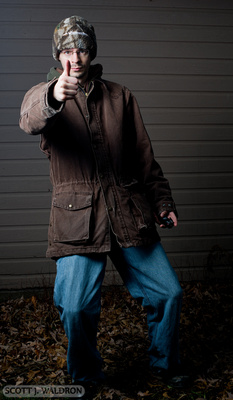
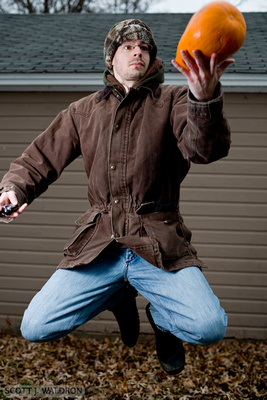
For the horizontal example photo and first vertical on the left, I had the camera set to a small aperture to limit ambient a good deal. This allowed me to bump up the flash power so that took center stage. With the while umbrella I shoot through, it worked out well to provide a nice soft light to the subject. Just look at the shadows and back wall to confirm because the edges are very diffuse. The third example on the lower right was with a wider aperture, so the background and foreground are more equalized.
Right now, the only future sessions I’ve thought of would be with colored gels and also with a variable ND filter so that I can use wider apertures outdoors.
Saving a comment response I made in the YouTube video where a viewer was asking about focusing cameras when doing self photography:
With any camera setup you can manual focus using a stand-in object, such as a light stand with a hat on it, so you get the focus where you want and then switch the camera to manual focus.
This video is really old so I’m not totally sure but I think those Yongnuo flash triggers might have been able to pre-focus before taking each photo so I wouldn’t need a stand-in on that case. It wouldn’t have been perfect but could have helped and been a little more convenient than a stand-in.
If you don’t have a way to trigger the camera wirelessly you can use the camera’s timer in combination with pre-focusing on something the same height as you. Remember that smaller apertures will help you get more of the scene in acceptable focus. So If you lens has a maximum aperture of f/1.8 then try using f/4 instead to see if that helps.
These days many cameras can be controlled by a smartphone app. This is what I’d likely use now. Most cameras give you a live view and some let you select exactly where you want the camera to focus.
You can often buy a dedicated camera trigger for many cameras too. These often can have the camera try to focus before taking the picture. I can’t give any specifics because it depends on the camera and the manufacturer.
